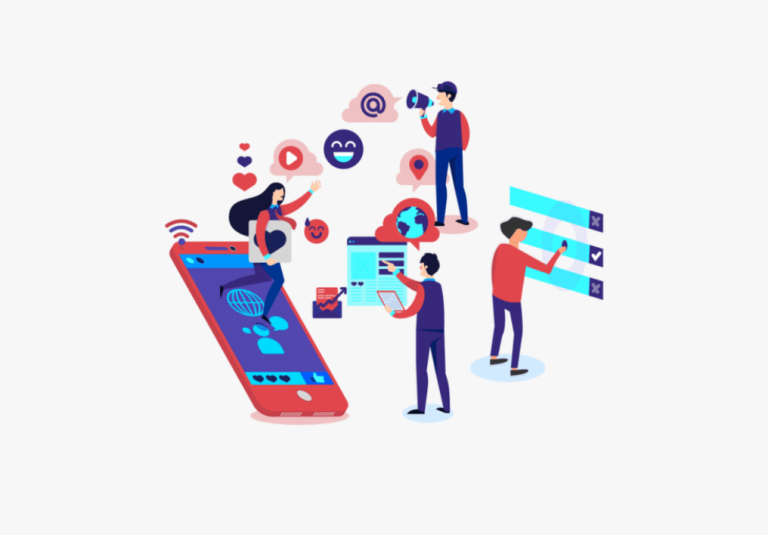Excerpt Introduction: Discover the benefits of gamification in digital marketing.This blog will guide you on incorporating game elements to captivate your audience and enhance engagement. In today’s fast-paced digital world, capturing and maintaining customer attention is more challenging than ever. Traditional marketing strategies often struggle to keep up with the dynamic preferences of modern consumers. Enter gamification: a powerful tool that can revolutionize your digital marketing efforts by infusing interactive and engaging elements into your campaigns. Let’s explore how gamification can enhance your digital marketing strategy, boost customer engagement, and foster brand loyalty.
What is Gamification?
Gamification involves integrating game-like elements into non-gaming contexts to engage users and encourage desired behaviours. These elements may encompass points, badges, leaderboards, challenges, and rewards.The primary goal is to make mundane tasks or interactions more fun and motivating, thus driving higher user engagement and participation.
Why Gamification Works
Gamification taps into fundamental human psychology, leveraging our innate desires for achievement, competition, and recognition. By providing immediate feedback and tangible rewards, gamification creates a sense of accomplishment and progress, which keeps users coming back for more. Here are a few reasons why gamification is so effective in digital marketing:
- Enhanced Engagement: Games are inherently engaging. By incorporating game mechanics into your marketing strategy, you can capture and retain your audience’s attention more effectively.
- Motivation and Incentives: Rewards and incentives motivate users to take specific actions, such as completing a survey, making a purchase, or sharing content on social media.
- Social Interaction: Leaderboards and social sharing features encourage friendly competition and community building, fostering deeper connections with your brand.
- Personalization: Gamification allows for personalized experiences, making users feel valued and understood, which enhances brand loyalty.
Key Elements of Gamification in Digital Marketing
To effectively implement gamification in your digital marketing strategy, consider incorporating the following elements:
Points and Badges
Awarding points for specific actions, such as signing up for a newsletter or making a purchase, can incentivize desired behaviours. Badges, on the other hand, serve as visual representations of achievements and milestones, giving users a sense of pride and accomplishment.
Leaderboards
Leaderboards introduce a competitive element, allowing users to see how they rank against others. This can drive users to engage more frequently and intensively to climb the ranks and achieve a higher status.
Challenges and Quests
Challenges and quests provide users with specific goals to achieve within a set timeframe. These can range from simple tasks, like sharing a post on social media, to more complex missions that require multiple steps.
Rewards and Incentives
Providing tangible rewards, like discounts, freebies, or exclusive content, can greatly enhance user participation. The key is to ensure that the rewards are meaningful and valuable to your target audience.
Implementing Gamification in Your Digital Marketing Strategy
Now that we understand the core elements of gamification, let’s dive into how you can effectively incorporate them into your digital marketing strategy.
Step 1: Define Your Goals
Before implementing gamification, it’s crucial to identify your primary objectives. Are you looking to increase website traffic, boost sales, enhance social media engagement, or improve customer retention? Clearly defined goals will guide your gamification strategy and help measure its success.
Step 2: Understand Your Audience
To design a gamified experience that truly connects with your audience, it’s essential to understand their preferences, behaviours, and motivations. Conduct market research, analyse customer data, and gather feedback to tailor your gamification elements to their needs.
Step 3: Choose the Right Game Mechanics
Based on your goals and audience insights, select the game mechanics that will best drive engagement and desired behaviours. For example, if your goal is to increase social media shares, incorporating a leaderboard and rewards system can encourage users to share more frequently.
Step 4: Integrate Gamification into Your Marketing Channels
Gamification can be applied across various digital marketing channels, including websites, mobile apps, social media platforms, and email campaigns. Ensure a seamless and consistent experience by integrating game elements into your existing marketing infrastructure.
Step 5: Monitor and Optimize
Once your gamification strategy is in place, continuously monitor its performance and gather user feedback. Analyse key metrics, such as engagement rates, conversion rates, and customer satisfaction, to identify areas for improvement. Regularly update and optimize your gamification elements to keep the experience fresh and exciting.
Real-World Examples of Gamification in Digital Marketing
Nike+ Run Club
Nike’s Run Club app is a prime example of effective gamification. The app tracks users’ runs, awards badges for milestones and features leaderboards to foster friendly competition. By gamifying the running experience, Nike has created a loyal community of users who are motivated to stay active and engaged with the brand.
Starbucks Rewards
Starbucks’ loyalty program uses gamification to enhance customer retention and drive repeat purchases. Customers earn stars for every purchase, which can be redeemed for free drinks and food items. The program also includes challenges and bonus opportunities, encouraging customers to visit more frequently and spend more.
Duolingo
Duolingo, a popular language-learning app, incorporates various gamification elements, such as points, levels, and streaks, to keep users motivated and engaged. The app’s gamified approach has made language learning fun and addictive, resulting in a highly engaged user base.
Conclusion: The Future of Gamification in Digital Marketing
As digital marketing continues to evolve, gamification will play an increasingly important role in capturing and retaining customer attention. By incorporating game elements into your marketing strategy, you can create more engaging, motivating, and rewarding experiences for your audience. Remember to define your goals, understand your audience, choose the right game mechanics, integrate gamification into your marketing channels, and continuously monitor and optimize your strategy. With the right approach, gamification can transform your digital marketing efforts and drive significant results.
Looking ahead, advancements in technology such as augmented reality (AR), virtual reality (VR), and artificial intelligence (AI) will further enhance the potential of gamification. These technologies will allow for more immersive and personalized experiences, making it even easier to engage and captivate your audience. By staying ahead of these trends and continuously innovating, businesses can leverage gamification to not only meet but exceed customer expectations, fostering deeper connections and loyalty in an increasingly competitive digital landscape.To explore how gamification can transform your digital marketing strategy, visit our website Websoft Techno or call us at +91 9850944480 or 099224 42272 to book your consultation. You can also visit us at Office No 301, Third Floor, Ganga Collidium Phase 1, Ganga Dham Chowk, Market Yard, Pune – 411037.
Top of Form
Bottom of Form

